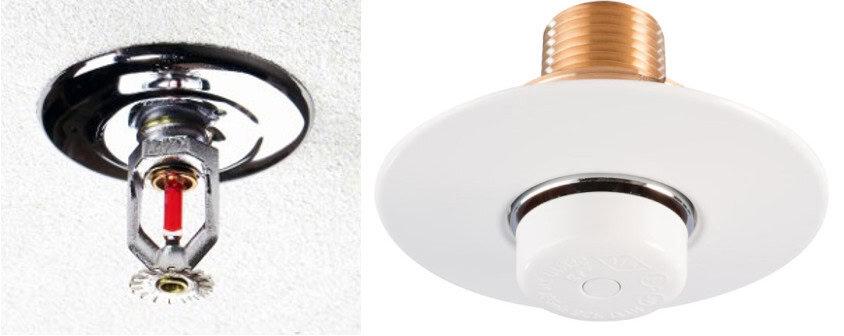NFPA rules and manufacturers use the term “flush” differently—and only one type of sprinkler escutcheon needs a listing
National Fire Protection Association (NFPA) standards require listings for many pieces of equipment in fire sprinkler systems, including sprinklers and some of their escutcheons. When an escutcheon that surrounds a sprinkler is listed, it means it and the sprinkler have been tested to fit and function correctly as an “assembly.”
However, there can be confusion about when “flush sprinklers” need a listed “flush escutcheon.” So, let’s try to clear things up:
- The NFPA rules for listed escutcheons and why they matter
- The different definitions for “flush”
- A listed vs unlisted escutcheon quick reference guide
QRFS has an extensive selection of escutcheons! We carry listed recessed escutcheons, listed flush escutcheons for institutional sprinklers, and unlisted one-piece standard, split-ring retrofit, and 401 escutcheons to fit a variety of installations!
NFPA rules for listed escutcheons and why they matter
Escutcheons cover the hole that installers cut around fire sprinklers to expose them in finished ceilings or walls. These parts serve a few purposes:
- Importantly, they make installations look good by filling in unsightly holes.
- Escutcheons can also help hold the sprinkler in place relative to their fittings and the ceiling or wall.
- Metal escutcheons help mitigate fire, smoke, and heat spread between compartments (rooms) that are protected by fire-rated barriers. International Code Council (ICC) codes permit metal escutcheons to cover sprinkler penetrations in fire-rated barriers (International Building Code (2021): 714.4.2).
- They may prevent hot gases from escaping into the gap in a ceiling or wall instead of gathering around the sprinkler’s heat-sensitive element, which could cause a slight delay in sprinkler activation. NFPA standards have come to regard this impact as “negligible,” but some manufacturer documents still cite this effect.
NFPA 13: Standard for the Installation of Sprinkler Systems has a few rules for escutcheons (some emphasis added):
From the 2022 edition of NFPA 13
16.2.5.1 Plates, escutcheons, or other devices used to cover the annular space around a sprinkler shall be metallic or shall be listed for use around a sprinkler.
16.2.5.2* Recessed and flush sprinklers shall be installed with the escutcheon that is part of its listing.
7.2.6.2* Escutcheons used with recessed, flush-type, or concealed sprinklers shall be part of a listed sprinkler assembly.
Right off the bat, the listed rules make sense for recessed sprinklers and their recessed escutcheons. Sprinklers that recess into a ceiling or wall might have their spray pattern blocked by an ill-fitting escutcheon that doesn’t hold the sprinkler in place relative to the surface:
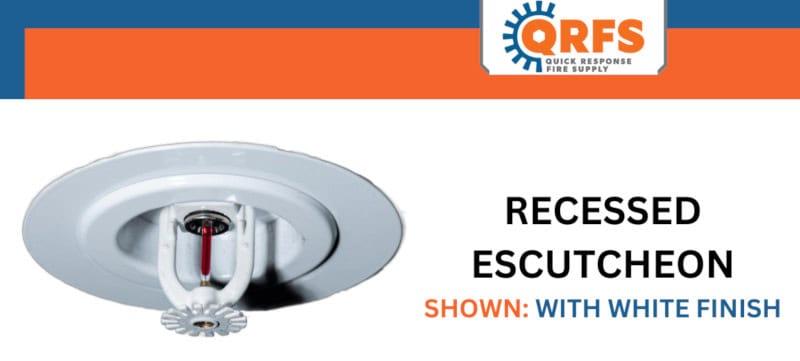
However, NFPA 13 also states that “flush sprinklers” should have listed escutcheons, and some sprinkler manufacturers describe the below sprinkler, escutcheon, and installation type as “flush:”
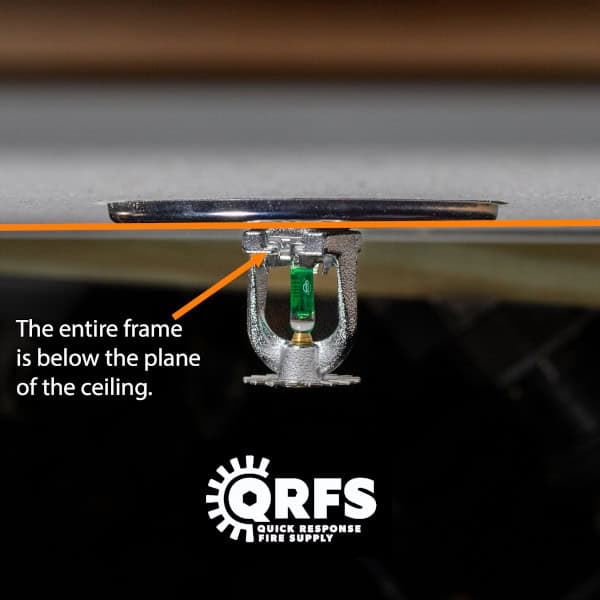
So, is the above a “flush sprinkler and escutcheon” that requires a listing, or could you use any generic, unlisted model that fits? The answers: No, it does not need to be listed, and yes, you could use a generic escutcheon.
The reasons rely on clearing up what the word “flush” can mean in fire protection.
The different definitions for “flush”
Again, some manufacturers refer to non-recessed, exposed sprinkler installations as “flush.” For example, here’s a reference in Victaulic’s data sheet for FireLock™ escutcheons:

Here’s what a V27 sprinkler and V27 flush escutcheon look like when they are installed:

However, NFPA defines “flush sprinklers” differently than the head and escutcheon shown above (some emphasis added):
From the 2022 edition of NFPA 13
3.6.2.2 Flush Sprinkler. A sprinkler in which all or part of the body, including the shank thread, is mounted above the lower plane of the ceiling.
This definition still might be a little confusing, especially given the oddly used term “shank thread”—we believe NFPA is referring to the ‘wrench boss’ at the base of the sprinkler’s frame. Thankfully, NFPA 13 provides a visual exhibit under its flush sprinkler definition:
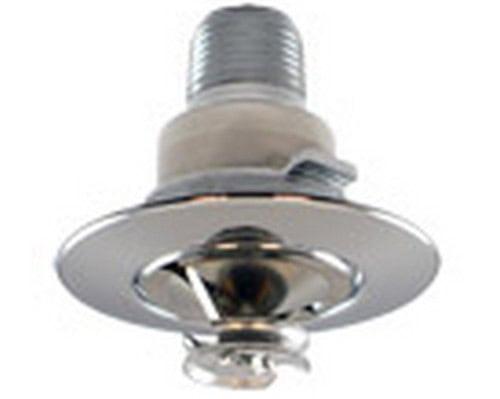
Thus, when NFPA refers to “flush” or “flush-style” sprinklers, it means a specifically designed type of head and escutcheon where significant portions of the sprinkler are within the plane of a ceiling or wall.
One type of “flush-style sprinkler” is the institutional fire sprinkler. These tamper-resistant heads are used in prisons, mental health facilities, and similar settings to mitigate improper activations. Another example is this Senju ZN-UF (SS2531) flush pendent.
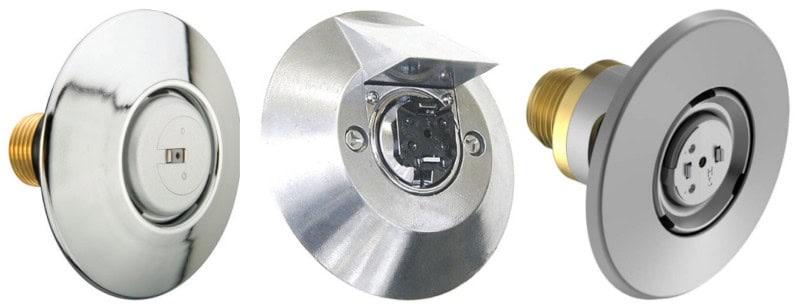
In contrast, the below escutcheon that Tyco describes as “flush” and would surround a regular, exposed fire sprinkler does not need to be listed—something Tyco notes in its explanatory text:
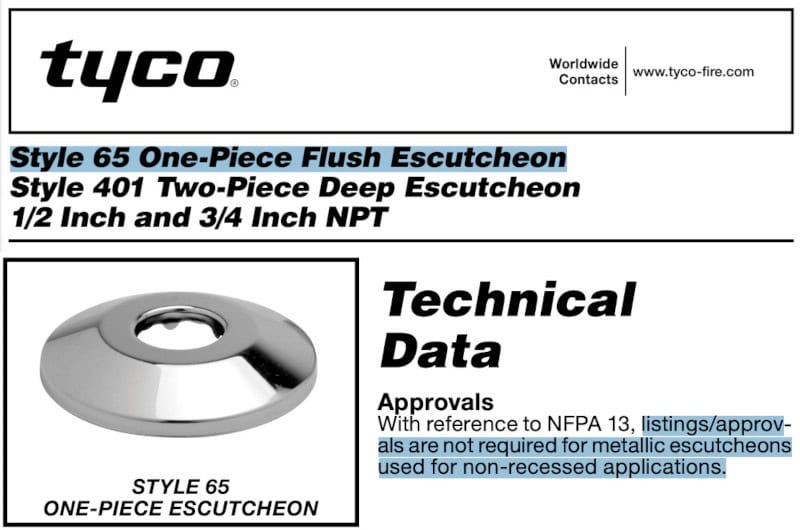
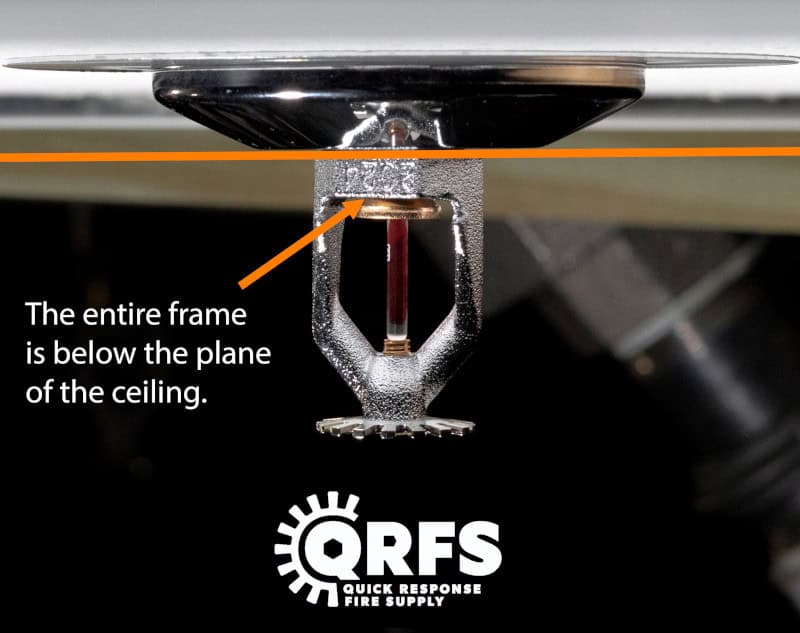
In addition, “401 escutcheons,” sometimes called “skirt-and-cup” escutcheons, that cover fittings when a sprinkler projects even further from a wall or ceiling also do not need to be listed:
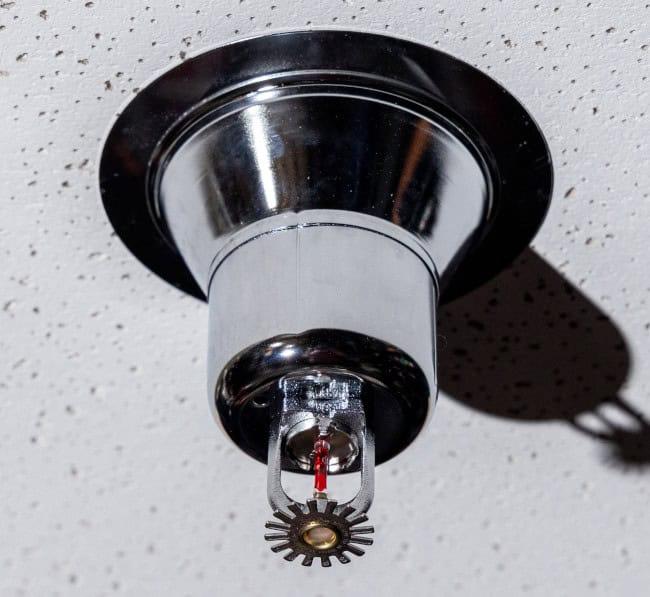
Thus, you can use unlisted standard (“flush”) escutcheons (or 401 escutcheons) that are made by either the fire sprinkler manufacturers or another company! In contrast, listed recessed and listed flush escutcheons are made by sprinkler manufacturers to fit their specific heads.
A listed vs unlisted sprinkler escutcheon quick reference guide
To summarize everything, here’s when escutcheons must be listed under NFPA rules:
- Sprinklers that are installed recessed must have listed recessed escutcheons.
- “Flush-style sprinklers” that have significant parts hidden within a surface need listed flush escutcheons.
- Sprinklers installed with the entire frame exposed beyond a surface can use unlisted escutcheons—whether standard/flat/flush escutcheons or 401/skirt-and-cup escutcheons.
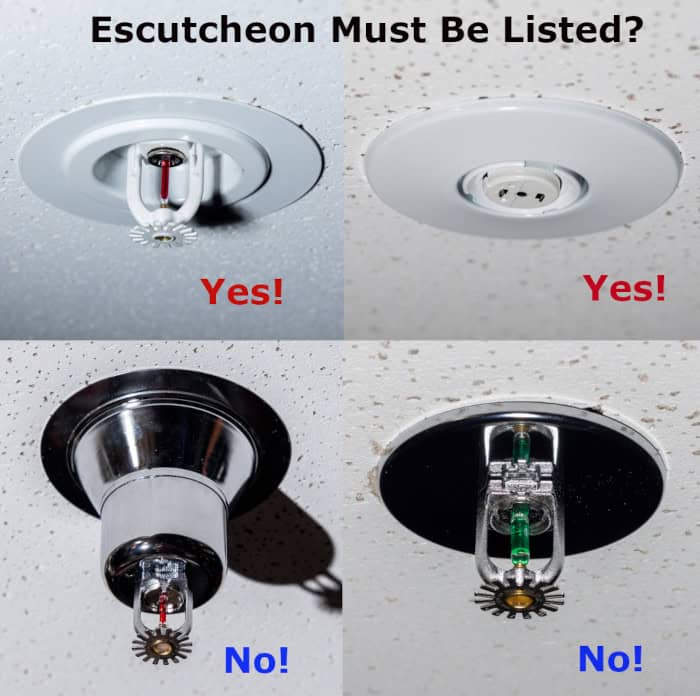
QRFS carries listed recessed escutcheons, listed flush escutcheons for institutional sprinklers, and unlisted one-piece standard, split-ring retrofit, and 401 escutcheons to fit a variety of installations.
If you aren’t sure what you need, we don’t have something online, or you want some help placing an order, contact us at 888.361.6662 or support@qrfs.com.
This blog was originally posted at blog.qrfs.com. If this article helped you, check us out at Facebook.com/QuickResponseFireSupply or on Twitter @QuickResponseFS.


